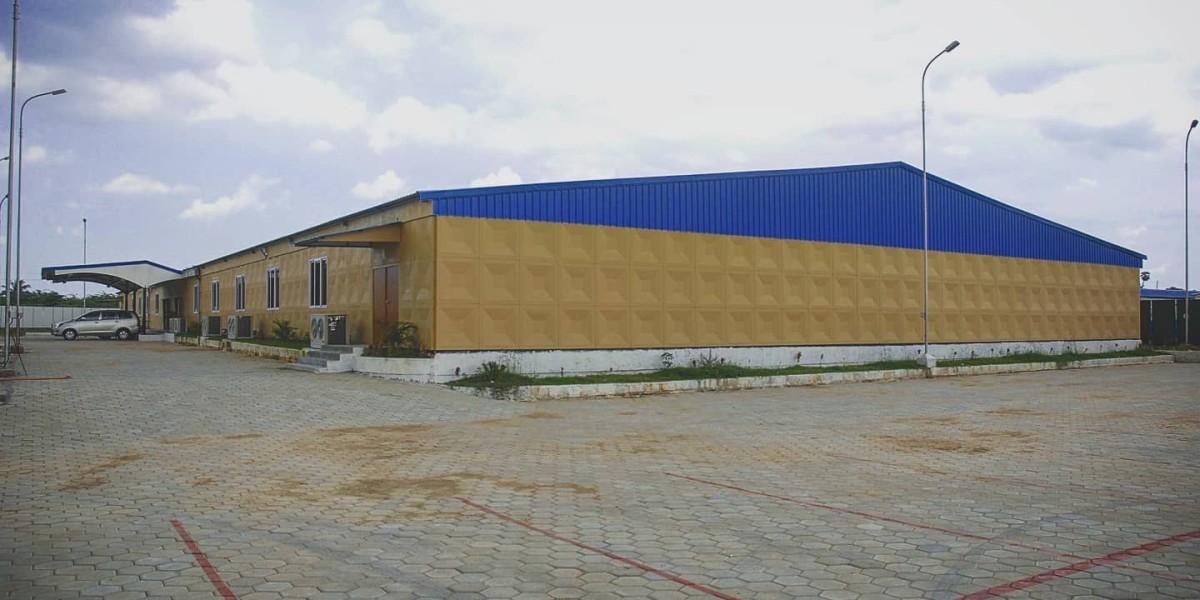A Comprehensive Guide to Prefabricated Building Construction
In an era where efficiency and sustainability have become construction cornerstones, prefabricated building emerges as a paradigm-shifting solution. Prefabrication – assembling components in a factory before transferring them to the construction site – intertwines quality, speed, and eco-consciousness into the architectural tapestry, fostering a future where buildings spring with unmatched experience and minimal environmental impact. This blog reveals the interesting world of prefabrication in building construction, explaining why it has many benefits, problems, and future trends. The purpose of this book is to help architects, constructors, and all those passionate about construction understand that modular innovation is revolutionizing the construction industry.
The Rise of Prefabricated Building
Prefabricated building, once a mere whisper in architectural circles, has become prominent, revolutionizing traditional construction paradigms. This ascent is rooted in a compelling history where urbanization and technological advancements intensified the need for swift, cost-effective, and quality-controlled building solutions. Through war periods and industrial evolutions, prefabrication burgeoned, morphing into a symbol of modernity and practicality in construction. Traversing through architectural epochs, it has continually refined, incorporating innovations and addressing emergent needs, thereby solidifying its place as not merely a method but a pivotal movement in crafting the built environment of the future.
Benefits of Prefabricated Building Construction
- Speedy Construction: A Time-Saving Marvel
Elevating efficiency to new heights, prefabricated building construction significantly curtails project timelines. Unlike traditional construction, where each phase is sequential, prefab allows for parallel progression, wherein while the foundation is being laid onsite, building modules are simultaneously being fabricated offsite. This synchronicity not only ensures swift project completion but also means that residents or businesses can occupy and utilize the spaces sooner, translating to earlier returns on investment and reduced interim financial burdens.
- Environmental Stewardship: Nurturing sustainability
Prefabricated buildings greatly reduce environmental impact by incorporating sustainable construction practices into their design. The controlled factory environment ensures precision, drastically reducing material wastage. Additionally, since major construction activities are confined to the factory, onsite pollution is mitigated. Furthermore, many prefab buildings are designed with energy-efficient features, such as superior insulation and the integration of renewable energy sources, contributing to long-term environmental conservation and reduced energy expenses for occupants.
- Cost-Effectiveness: A Wallet-Wise Choice
Merging quality with affordability, the prefabricated building emerges as a cost-effective construction methodology. The streamlined manufacturing process minimizes waste, ensuring optimal material utilization. The speedier construction timeline also translates to reduced labor costs, and with fewer unexpected onsite challenges, budget overruns are less likely. Moreover, the capacity to incorporate energy-efficient features means occupants can relish reduced utility bills, making prefab buildings economically appealing both in the short and long term.
- Quality Assurance: Consistency is Key
The prefabricated building brings forth an unmatched consistency in quality, owing to the controlled manufacturing environment. With stringent quality control practices in factories and the elimination of onsite variables like weather conditions, each module is crafted to exact specifications and adheres to predetermined quality standards. This ensures that every aspect of the building, from the smallest component to the overall structural integrity, is reliable and consistent, offering peace of mind and durability to occupants and owners alike.
- Enhanced Safety: Prioritizing Well-Being
Shifting the bulk of construction activities offsite to a controlled factory setting inherently enhances safety in the prefabricated building process. Factory environments are often subject to rigorous safety protocols and are less susceptible to variables like adverse weather, ensuring a safer workspace for laborers. Moreover, reducing onsite activities means fewer opportunities for onsite accidents during the construction phase. Furthermore, the meticulous manufacturing process ensures that the final assembled structure is sound and secure, safeguarding the well-being of future occupants.
3 Key Challenges and Ingenious Solutions in Prefabricated Building Construction
- Logistical Quandary: Transporting Modules
- Challenge: Maneuvering voluminous prefab modules from the manufacturing unit to the construction site poses logistical challenges, especially across dense urban fabrics and remote areas.
- Solution: Strategic Logistics and Design Adaptability. Implementing meticulous logistics planning and leaning into designs that enable modules to be effortlessly transported and assembled mitigates transportation woes, ensuring that even in the most intricate locales, prefab construction thrives.
- Design Dilemma: Balancing Modularity and Customization
- Challenge: The apparent dichotomy between the modular nature of prefabricated buildings and the desire for unique, tailored designs often emerges as a conceptual roadblock.
- Solution: Technological Infusion in Design. Employing cutting-edge design software allows architects to blend modular efficiency with bespoke design elements. This union of technology and creativity unfurls possibilities where prefabricated components morph to embody distinctive architectural expressions, aligning client aspirations with modular practicality.
- Scalability Stumbling Block: Amplifying Prefab to Larger Projects
- Challenge: Envisaging prefabricated building practices within the scope of larger, more complex projects often conjures apprehensions regarding feasibility and scalability.
- Solution: Hybrid Construction Techniques. Intertwining prefabricated elements with traditional building practices crafts a harmonious construction methodology. This hybrid approach amalgamates the rapid, efficient nature of prefab with the versatility of traditional construction, enabling projects of varied scales to bask in the benefits of both realms.
Through these challenges and inventive solutions, prefabricated building construction continues to evolve, weaving through the tapestry of modern construction with an ethos of continuous improvement and innovation. This perpetual cycle of identifying hurdles and architecting solutions not only elevates prefabricated building methodologies but also enriches the broader spectrum of construction practices, driving forward a future where sustainability, efficiency, and design excellence converge.
Future Trends in Prefabricated Construction
Prefabricated construction, harmoniously blending technology and architecture, is propelling toward a future punctuated with innovation and sustainability. The advent of 3D printing is revolutionizing prefab methodologies, enabling the crafting of more intricate, customized building modules with heightened efficiency and reduced waste. Simultaneously, the surge in smart buildings is influencing prefab construction, with modular components increasingly being designed to seamlessly integrate IoT devices and smart systems.
Moreover, sustainable materials and energy-efficient designs are becoming inextricably woven into prefab practices, reflecting a growing emphasis on ecological responsibility. Furthermore, collaborative construction models leveraging AI and VR are anticipated to refine planning and execution processes, enhancing precision and stakeholder communication in prefabricated building projects. This evolving tapestry of trends underscores a future where prefabricated construction is not just a methodology but a dynamic, adaptive solution for resilient, intelligent, and sustainable building.
Conclusion
Prefabricated building construction magnificently intertwines technology, sustainability, and innovation, sculpting a future where structures are not merely built but ingeniously crafted with amplified efficiency and mindful of environmental footprints. Embracing prefab methodologies signals a stride towards smarter, greener, and more economically savvy construction, heralding a future where every structure is a testament to architectural evolution and sustainability.







